LettsGroup HQ
In April, LettsGroup expanded the VentureFactory's AI capabilities within its Step-by-Step venture building process, while optimising the new Dashboard specifically for pre-Seed tech and digital startups. The platform now boasts an impressive 3rd Party AI Agent library with a new cutting-edge suite of Design Agents complementing its other function-specific agents, alongside new startup CRM capabilities integrated seamlessly into the stack with project, product and collaboration tools. AI VentureFactory benchmarking stats are highlighting compelling advantages for users leveraging this revolutionary venture building-as-a-platform approach. Listen to the teams podcast on the game-changing impact the AI VentureFactory is having on the startup ecosystem in our latest podcast. Last, LettsGroup has been engaging with prominent tech and startup leaders about joining the group as it expands, developed insightful research comparing European and US startup performance, and is hosting an exclusive Demo Day showcasing its deeper tech ventures on May 8th.

LettsCore
LettsCore's team achieved a breakthrough in April by optimising their content management blockchain through a strategic transfer from onchain to offchain content storage - unlocking strong economics as the solution scales in the market. This architectural evolution maintains seamless transparency with the LettsCore API, highlighting the interface's sophisticated effectiveness between applications and content implementation. The team has revolutionised search capabilities by deploying powerful full-text and AI-driven search functionality (successfully tested with OpenAI's ChatGPT 4.0), alongside an innovative Model Control Protocol (MCP) server designed for advanced AI clients like Claude. MCP represents the frontier of AI tool integration, dramatically expanding interaction with LettsCore content across multiple platforms. The team will further expand content distribution by implementing a Mastodon social network server, enabling users to effortlessly auto-promote content through federated social media. This strategic implementation will be able to connect content across multiple other social networks including BlueSky and Threads, positioning LettsCore at the forefront of decentralised content management and sharing.
LettsNews
LettsNews has supercharged its AI-powered 'newsroom tech for everyone' with a number of exciting enhancements. The platform now features sophisticated Advanced Search + AI capabilities, dramatically improving search efficiency through intelligent filters and automated content discovery. The standout addition - an AI-powered Title and Description generator - has garnered enthusiastic user response by functioning as a personalised newsroom editor with customisable tone-of-voice options. The highly anticipated 'Promote' feature is about to launch, set to revolutionise content distribution with frictionless automation to BlueSky initially, with intelligent linking to distributed stories. In an ambitious roadmap, LettsNews is aggressively expanding its AI features and tools to include sophisticated automated content generation for image-specific titles and descriptions, alongside AI-generated Notes and Story drafts - positioning the platform to redefine how digital news is created, optimised, and distributed.

LettsArt
LettsArt is close to reaching 1,000 art galleries using its platform to better manage, distribute and sell art online - which is a major milestone. Its AI, no-code capabilities is initially attracting a wide array of artist galleries showing thousands of artworks with over 3,000 users on its platform. The art-tech startup supports the industry's various fragmented constituents with a new model, semi-private platform that makes buying, selling and managing art and art businesses safe, simple and fast - while flowing more revenues back to the creators. It is building considerable momentum in its early adopter segment of emerging artists while beginning to make inroads into professional studios and with collectors. LettsArt plans to add auto-distribution to leading art marketplaces in the coming months as well as auto-promotion to leading social networks and an exciting clutch of new AI capabilities.
LettsSafari
LettsSafari has seen a strong increase in numbers over the last 90 days, now with approaching 650 subscribers that demonstrate above norm engagement rates - and with wider visitor numbers expanding. The digital platform for mass market rewilding has a focused and loyal base to grow from - with a high percentage of nature restoration leaders and influencers at its core. AI effectiveness within the nature-tech startup is growing behind the scenes. LettsSafari has adopted LettsNews' platform in the field and in-office to optimise the digital platform's content operations and news distribution. LettsSafari is excited about its journey as a digital-first operator with a growing brand in such a physical, lower-tech universe.
Other LettsGroup Ventures
We highlight just a few of our ventures in each monthly edition of The LettsGroup NewsFlash. To explore other LettsGroup ventures go to LettsGroup/ventures.
It's Easter, so here's one that's a little more light-hearted! The giant green egg-planet (below) isn't just LettsSafari's artistic whimsy - it's a perfect symbol for Easter's surprising connections to our planet's biodiversity! And no, we're not just yolking around. Ouch... While most people associate Easter with chocolate bunnies and pastel decorations, environmentally-minded celebrants are hatching a revolution that would make Mother Earth proud. You could call it "Operation Resurrection" for our ecosystems.

Did you know that the European hare - often confused with the "Easter bunny" - is actually a keystone species in rewilding projects across Europe? These "Easter hares" aren't delivering candy; they're delivering ecosystem services through their natural grazing patterns that maintain grassland habitats. Talk about multitasking! They're basically the unpaid landscapers of the natural world. No wonder they need a holiday.
"The irony isn't lost on us," says conservation biologist Dr. Emma Thorne. "The very animal we've turned into a chocolate novelty is critical for restoring biodiversity in certain European landscapes. It's like discovering Santa Claus is actually essential for arctic ice formation."

Easter's spring timing coincidentally aligns with critical breeding periods for countless species. This has inspired a movement of "quiet zone" Easter celebrations, where communities and church groups time their festivities to minimise disruption to wildlife. Because nothing says "Happy Easter" like respecting a woodcock's mating dance! If you've ever seen a woodcock's dance moves, you'd understand they need all the privacy they can get - those birds have rhythm that would make the Easter Bunny hop with envy.
The traditional Easter egg hunt is getting an eco-makeover through "seed eggs" - biodegradable egg-shaped containers filled with native wildflower seeds. Plant these little miracles and watch as they transform into micro-habitats for pollinators. Finally, an Easter egg that gives you something better than a sugar crash and chocolate-stained fingers!
"We've distributed over 50,000 seed eggs across urban areas," reports community organiser Wei Chen. "Children love watching their Easter eggs grow into wildflower patches that attract bees and butterflies. It's Easter magic that lasts well beyond Sunday brunch! And unlike chocolate eggs, these don't mysteriously disappear when parents get late-night munchies."

In the UK, conservation organisations have brilliantly repurposed Easter as an educational platform about ground-nesting birds whose populations have plummeted due to habitat loss. "Wild egg hunts" teach participants to identify and protect bird nests while connecting ancient fertility symbols to modern conservation needs. It's the only Easter egg hunt where finding nothing is actually a win for conservation.
So this Easter, as you admire that chocolate globe or colourful egg, remember you're holding more than a treat - you're holding a symbol of Earth's remarkable biodiversity and our opportunity to help it thrive. Now that's something worth celebrating.
And if anyone asks why you're planting your Easter eggs instead of eating them, just tell them you're expecting a different kind of miracle this year - the kind that doesn't require explaining to your dentist!
Become a member of LettsSafari this Easter and build rewilding safari parks and gardens with us. Some might even house Easter bunnies! Subscribe at LettsSafari.com.
The European Union finds itself in a paradoxical position. The region accounts for 19% of global R&D investment, produces 20% of global scientific publications, and houses 43% of the world's leading life sciences universities. Yet as an ING analysis reveals, from 2000-2019, productivity growth in Europe's high-tech sectors lagged significantly behind the US, with a negative gap of approximately 0.1 percentage points annually in manufacturing of computers and electronics.
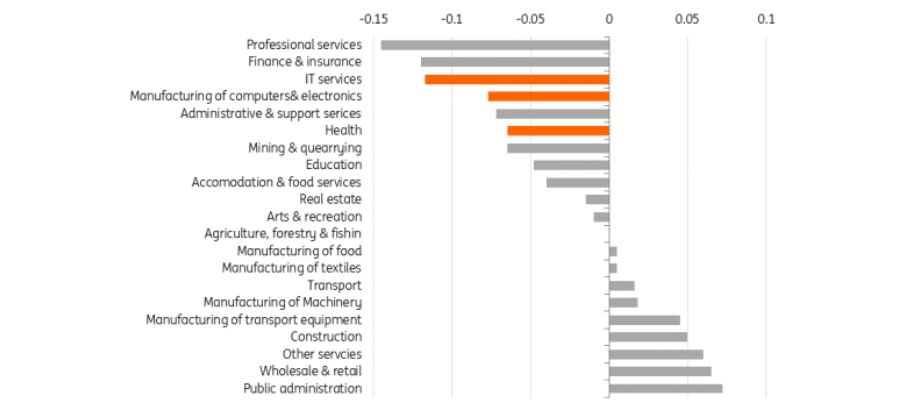
This productivity chasm has profound consequences. While high-tech manufacturing has increased production by an impressive 60% over the past decade, competing sectors in the US have grown faster, widening the transatlantic technology gap. The stark reality, as detailed in the Draghi report, is that Europe's most innovative sectors remain caught in what economists term a "middle technology trap", excelling at incremental improvements while failing to pioneer breakthrough innovations that create market-defining platforms.
"The road ahead is not without challenges," notes Lukas Leitner, a deep tech investor at Lakestar. "The U.S. has a 'flywheel effect' in deep tech while Europe's ecosystem is still immature."
At the heart of Europe's tech leadership deficit lies a profound cultural distinction: risk aversion. As Bloomberg columnist Allison Schrager observes in a recent Japan Times piece, "European culture is just more risk-averse than America's. There is a reason stock ownership is lower and welfare states are bigger in Europe."
This risk aversion manifests in multiple dimensions:
This cultural orientation toward security over opportunity creates a systemic handicap for European tech development. As Leitner observes, "Europe has strong research institutions, engineering talent, and supportive public sentiment for deep tech, but there need to be policy changes to foster a culture that supports taking risks."
Perhaps most critically, Europe suffers from a pronounced leadership gap in its tech ecosystem. While the US has produced daring tech leaders like Elon Musk, Jeff Bezos, and Mark Zuckerberg - figures willing to pursue massively ambitious, high-risk ventures - Europe has generated comparatively few equivalent entrepreneurial icons.

This leadership deficit has several dimensions:
The leadership gap creates a vicious cycle. Without visible examples of audacious tech leaders achieving massive success, the next generation of European entrepreneurs calibrates their ambitions and risk appetites accordingly, perpetuating the pattern of more modest ventures.
Europe's venture capital landscape, while growing, remains fundamentally different from its American counterpart. According to data cited in the ING report, venture capital as a percentage of GDP in the EU is approximately one-fifth of US levels. More troubling, the concentration of late-stage funding is even more pronounced, with European tech companies raising on average just half the capital of their American counterparts at equivalent funding stages.
The funding gap results in a systematic disadvantage for European startups. A recent TechCrunch piece reveals that 50% of the growth capital raised by European deep tech startups comes from outside the continent. The finance issue isn't merely quantitative - it's structural. The EU has been bluntly criticised for a financial infrastructure that is not in place, a struggling market for investing in tech; all ultimately increasing its risk aversion compared to the US.
Europe faces an alarming talent deficit. A Euractiv Advocacy Lab piece documents that against EU targets of 20 million ICT specialists by 2030, current projections suggest only 12 million skilled professionals may be available. This 8-million-person gap represents perhaps the single largest constraint on Europe's digital ambitions.
While Europe has increased its AI professional base tenfold over the past decade, China leads in sheer numbers of AI practitioners. The World Economic Forum forecasts that 70% of the next decade's economic value will stem from digitalisation, making this skills shortage potentially devastating to Europe's competitive position.
Despite decades of integration efforts, Europe's digital landscape remains fragmented. As the ING analysis states, "Cross-border consolidation for economies of scale has proven more difficult in Europe due to fragmented and stricter regulation and competition policies for consumer protection."
This fragmentation creates profound scaling disadvantages. European tech companies must navigate 27 different regulatory regimes, language markets, and consumer preferences - diluting resources and complicating growth strategies. By contrast, American tech companies can achieve massive scale in a single, homogeneous market before approaching international expansion.
Perhaps most alarmingly, Europe has developed critical dependencies on foreign technologies in infrastructure domains. In a 'The Rest is Politics' question time podcast, Campbell and Stewart identify cloud computing as "entirely American" and notes Europe's reliance on US companies for defence resources marked by US-owned data gathering mechanisms.
These dependencies extend into security domains, with specific mention of companies like "SpaceX and Palantir" representing areas where Europe lacks sovereign alternatives. The podcast suggests that the EU is completely reliant on US tech.
Against this challenging backdrop, deep tech may represent Europe's most promising path toward technological sovereignty. According to a 184-page report by venture firms Lakestar, Walden Catalyst, Dealroom, and Hello Tomorrow, deep tech attracted €15 billion ($16.3 billion) in venture investments in Europe in 2024, with nearly one-third of all European venture capital now directed toward deep tech companies.

European strengths in deep tech are substantial:
As Arnaud de la Tour, CEO of Hello Tomorrow, notes: "The National Science Foundation, which is the biggest supporter of founder-applied research in the U.S. has had its budget cut by half. A lot of those great scientists don't have a job anymore, and many could come to Europe."
Alongside the deep tech opportunity, innovative approaches to venture creation deserve careful examination. LettsGroup's AI VentureFactory represents one of the most systematic attempts to address Europe's venture-building challenges. The company's approach is based on a fundamental insight: the traditional venture-building process remains remarkably artisanal despite technology transforming nearly every other industry.
LettsGroup has developed what it calls the Innov@te methodology - a comprehensive venture-building framework with seven stages, 49 distinct steps, and hundreds of sub-steps developed over 15 years. This approach transforms what has historically been tacit, founder-dependent knowledge into explicit, transferable systems, potentially offering a solution Europe's crippling risk-averse landscape.
The potential impact is significant. LettsGroup claims its systematic approach can double conventional venture success rates from one successful venture in ten to one in five. If accurate, this would represent a dramatic improvement in capital efficiency - a critical advantage in Europe's more constrained funding environment. The AI VentureFactory also claims it's approach can reduce the cost of venture building by up to 90%.
The AI VentureFactory addresses several European structural challenges:
What makes this approach particularly relevant to Europe's challenges is its systematic nature. Rather than attempting to copy Silicon Valley's high-risk, founder-genius model, LettsGroup has created a structured methodology and AI-powered software platform that potentially fits better with Europe's more process-oriented business culture while still delivering improved outcomes.
For Europe to create genuine tech leaders capable of ensuring digital sovereignty, four essential transformations must occur:
Europe must undertake the difficult but necessary cultural shift toward embracing calculated risk-taking in technology ventures. This doesn't mean abandoning European values of stability and security, but rather recognising, as Schrager puts it, that "technology-driven growth is inherently unpredictable and creates winners and losers."
This shift requires several elements:
The LettsGroup model potentially offers a bridge by creating more systematic approaches to risk management without reducing the inherently risky nature of technological innovation.
The evidence is clear: Europe's capital markets must undergo fundamental transformation. As the ING report states, "European capital markets, fragmented and risk-averse, fail to provide the financing needed for global competitiveness."
This transformation would require regulatory changes to facilitate cross-border investment, institutional shifts in risk appetite, and dedicated mechanisms to bridge the "valley of death" between early-stage funding and growth capital.
Addressing the 8-million-person ICT skills gap requires a comprehensive strategy across education, immigration, and remote work policies. The Euractiv piece highlights one small-scale initiative - Huawei's partnership with UNESCO on ICT competitions - but systemic solutions demand coordinated action at the European level.
Universities must expand technical programs, mid-career retraining initiatives need significant scaling, and Europe must develop compelling value propositions to retain and attract global tech talent.
Europe cannot achieve technological sovereignty across all domains simultaneously.
Such focus might concentrate on deep tech areas where Europe has natural advantages, like photonics computing, which offers "major advantages in speed and efficiency" according to Leitner. By leveraging specific domains of excellence, Europe could develop distinctive technological capabilities that provide strategic independence.

Can Europe create genuine tech leaders capable of ensuring digital sovereignty? The evidence suggests qualified optimism, but only if Europe embraces transformative approaches rather than incremental adjustments.
The deep tech sector's growth, now attracting nearly a third of all European venture capital, indicates investors recognise this potential path to technological sovereignty. Meanwhile, the AI VentureFactory approach developed by LettsGroup offers a systematic methodology that could help Europe maximise returns from its more limited capital resources while addressing the risk aversion challenge.
The current geopolitical environment may also create unexpected opportunities. As de la Tour notes, science defunding in the US could drive talent toward Europe, while photonics computing represents a domain where Europe can lead rather than follow.
As Schrager concludes in her analysis of European risk aversion, "finding the right balance between reducing risk and encouraging growth is as much about values as about economics." Europe possesses the fundamental assets needed for tech leadership: world-class research, substantial financial resources, regulatory sophistication, and democratic legitimacy. What it has historically lacked is the cultural comfort with risk, the leadership examples, and the institutional coordination necessary to translate these assets into global tech leadership positions.
By combining deep tech investment with systematic venture-building methodologies like LettsGroup's AI VentureFactory, while simultaneously undertaking the harder cultural shift toward embracing smart risk-taking and developing more risk-tolerant leaders, Europe might just find its path to genuine technological sovereignty. The stakes couldn't be higher, particularly in the "Trumpocene" era where, as William Burns argues, "Europe urgently needs to rethink technological sovereignty."
LettsGroup HQ
LettsGroup is excited to launch its AI VentureFactory to the UK startup market from April, following an extensive private beta. Automation within the platform has reached an inflexion point with all the stages, steps and sub-steps in Innov@te's venture building process fully AI-enabled. Thorough prompt engineering has genuinely elevated the platform. With it, we believe that startups using the AI VentureFactory can accelerate their growth and automate their operations more than previously possible, and at a systemically lower cost-to-build. Indeed, early benchmarking has measured up to 90% lower cost to build tech-driven startups. Its go-to-market plans and pricing for the UK market are live, so early stage founders and investors can sign up and get going at www.Letts.Group.
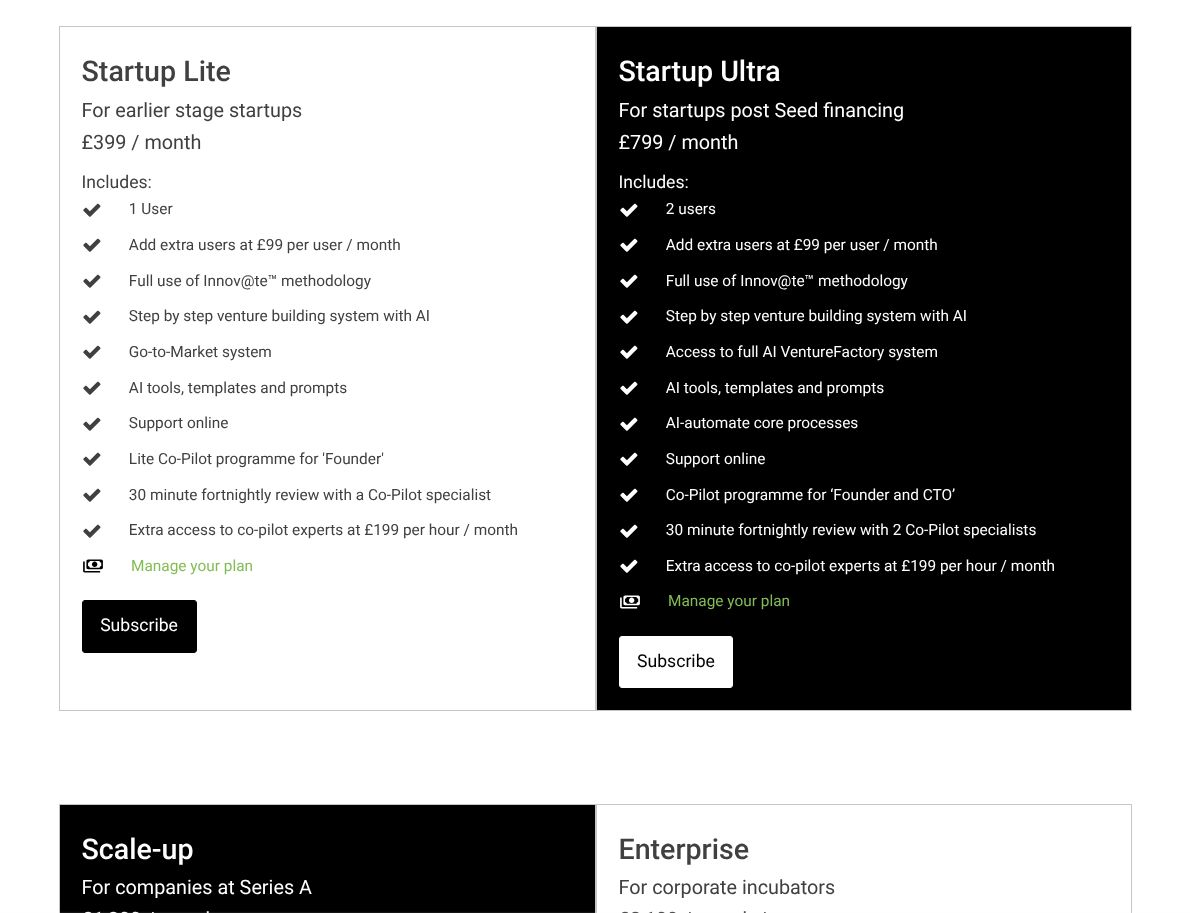
LettsCore
LettsCore's content management blockchain platform is slated to go live at the end of Q2, and is busy getting the last features ready for final testing. Engineering work has centred around automated management of subscriptions, seamlessly moving funding into LettsCore wallets and on to the end users own billing wallets. This is essential to operating its payments, top-ups and subscription plans at-scale. Following this, the team will focus on optimising the management of distributed content meta data. LettsCore's content meta data sits in a cloud database, optimising the operational costs of running the innovative platform tackling fake information, media micro-monetisation and content controls for AI. With this completed, the team will add advanced meta data search, and MCP (Model Context Protocol) functionality, which enables LettsCore to expose its service layer, using this emerging standard, to multiple LLM platforms and AI models such as Anthropic's Claude.

LettsNews
LettsNews newsroom tech has performed well since its Beta launch in late January. As a result, the product team is focused on rolling out a series of new AI features over the coming weeks and months. Next week, Advanced Search + AI will be released, enabling better search filtering for users (with AI to make the filters), optimising the discovery of Content Items to be auto-inserted into news Stories. Following this, LettsNews will launch a new AI Title and Description generator which serves like a private newsroom editor. The team is also finishing its new 'Promote' feature so users can auto-post social media messages (with links to their distributed stories), using AI to streamline the process and improve social SEO by delivering multiple micro-posts targeted for selected social media channels.

Book your weekend or week-long eco-retreat in southwest England at LettsRetreat.com today.
LettsArt
LettsArt continues to grow at an accelerated pace, with a sizeable number of galleries, artists and collectors adopting its platform to manage, distribute and sell art better online. It now boasts over 900 art galleries powered by Its AI no-code software, with over 3,700 artworks loaded and 2,750 collectors signed up. It is adding 3-4 new users a day with 1-2 new online galleries being started a day. The product team will launch more advanced subscription plans in Q2, with an attractive entry price and clearly differentiated tiers for single and multi-user accounts. Following this, they will start building a new, streamlined AI approach to sign up for the platform, optimising higher volume conversion rates.
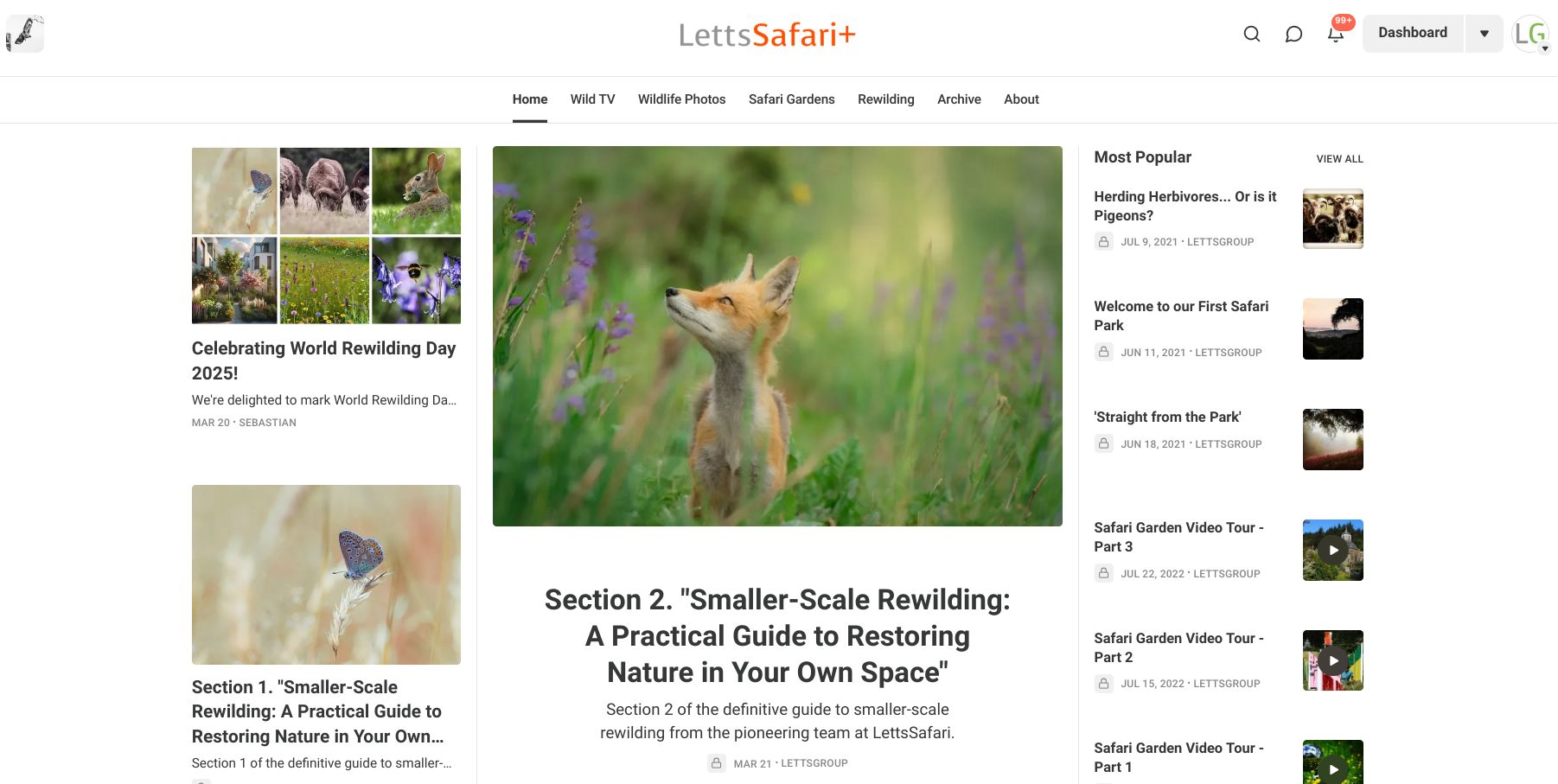
LettsSafari
In March, LettsSafari's platform for mass-market rewilding released “Smaller-Scale Rewilding: A Practical Guide to Restoring Nature in Your Own Space”. This, extensive, online guide to smaller-scale rewilding is available to paying subscribers of LettsSafari+, in weekly instalments, released section by section. Photos and videos deliver an immersive experience, with references and embeds creating an extended learning tool. It has taken several years to gather the data to produce this work - we recommend subscribing to LettsSafari.com to experience it. LettsSafari also announced its members open day on Saturday 14 June in Exeter City's wilded Capability Brown gardens.
Other LettsGroup Ventures
We highlight just a few of our ventures in each monthly edition of The LettsGroup NewsFlash. To explore other LettsGroup ventures go to LettsGroup/ventures.
Today, we sit down to discuss the turbulent nature of today’s innovation economy, and the company looking to turn it all around using AI. We talk artisanal scaling, the valley of death, and the endless cash wasted everyday on an uncodified scale-up system in the UK innovation economy. Let’s see how LettsGroup is looking to solve that. See more in their recent analysis: https://letts.group/2025/02/27/from-failure-to-fortune-how-ai-could-revolutionise-the-uks-innovation-economy/

In the competitive arena of global innovation, the UK has established itself as Europe's venture capital powerhouse, attracting £8 billion in investment in 2023 alone. Yet beneath this headline figure lies a troubling reality: the venture building process remains fundamentally broken. With 60% of UK startups failing within their first three years and a five-year survival rate hovering at just 42.4%, we must confront an uncomfortable truth – the traditional approach to building and scaling ventures is profoundly inefficient.
This analysis examines two critical systemic failures in the venture ecosystem: unacceptably high failure rates and the persistence of artisanal, ad hoc venture building methods in an era of unprecedented technological capability. Against this backdrop, we assess whether LettsGroup's AI VentureFactory represents a genuine paradigm shift or merely an incremental improvement to a fundamentally flawed model.

The venture capital model has long operated on a portfolio theory approach – invest in ten companies expecting seven or eight to fail, two to return capital, and one to deliver outsized returns that justify the entire portfolio. This approach, while accepted as standard practice, represents a staggering market inefficiency when examined objectively.
Research from Harvard Business School senior lecturer Shikhar Ghosh underscores the severity of this issue. His study of more than 2,000 venture-backed companies that raised at least $1 million from 2004 to 2010 found that:
This aligns with UK-specific data that reveals:
These statistics represent more than just failed businesses – they signify billions in misallocated capital, thousands of unrealised innovations, and profound opportunity costs for the UK economy. Each failure represents knowledge, talent, and resources that could have been deployed more effectively with proper systems and methodologies.
These statistics highlight an extraordinary level of failure that has become normalised in the venture building industry. Such failure rates would be considered unacceptable in most other sectors of the economy and represent a significant opportunity for improvement through more systematic approaches.
The second critical challenge lies in the persistently artisanal, ad hoc nature of venture building. Despite technological advancement transforming nearly every industry, the process of building startups remains largely unchanged from decades past – reliant on founder intuition, trial-and-error methodology, and highly variable approaches to market development.
This artisanal model creates fundamental limitations that perpetuate high failure rates:
Each founding team essentially "reinvents the wheel," learning venture-building lessons through costly firsthand experience rather than systematic knowledge transfer. The typical entrepreneur must personally discover optimal approaches to product development, go-to-market strategy, team building, and capital raising - often through expensive trial and error. This creates an inefficient knowledge ecosystem where lessons learned are rarely codified or transferred between ventures.
As noted in industry analyses, the venture capital industry "still places the greatest emphasis on financial analysis versus operational capabilities." While financial details are crucial, they "do not contain enough forward-looking information to understand, track, and govern the venture performance of today's ever-changing market brought on by operational challenges and swings." This myopic focus on financial metrics over operational excellence exacerbates the knowledge gaps in venture building.
Without standardised frameworks for venture development, quality control becomes highly variable. Investors must evaluate each startup using bespoke assessment metrics, creating information asymmetries and increasing due diligence costs. This inconsistency extends to operational practices, governance structures, and reporting standards – all contributing to market inefficiencies.
The absence of systematic approaches leads to suboptimal resource allocation. Founding teams typically over-invest in areas of founder expertise while neglecting critical business functions outside their experience. This creates imbalanced organisations that excel in certain dimensions while remaining dangerously underdeveloped in others.
Perhaps most critically, the artisanal model inherently limits scaling potential. With venture knowledge primarily housed in individual founders rather than systems and processes, organisations struggle to scale beyond the direct oversight capabilities of the founding team. This creates growth bottlenecks and governance challenges as ventures attempt to expand.
The UK venture capital market, while sophisticated by global standards, exhibits structural characteristics that exacerbate these challenges. Total venture capital investment in UK startups reached £8 billion in 2023, placing it as Europe's leading venture market with approximately 30% market share. However, this capital remains inefficiently deployed, with several structural factors constraining optimisation:
Investment remains heavily concentrated in London, which accounts for 51% of all venture deals. The concentration of VC firms is even more pronounced, with approximately 80% based in London. This geographic concentration creates resource asymmetries that limit innovation development in other regions while contributing to overheated valuations in prime markets.
The UK venture market shows particular strength in early-stage funding but demonstrates comparative weakness in growth and scale-up capital. This "missing middle" in the funding ecosystem contributes directly to the valley of death phenomenon, where promising ventures secure initial funding but struggle to access follow-on capital required for scale.

This scale-up gap is evidenced by the growing dominance of foreign investors in larger funding rounds:
This reliance on foreign capital creates vulnerability in the UK innovation ecosystem, with intellectual property, strategic decision-making, and ultimately economic benefits frequently flowing overseas rather than remaining in the UK economy.
Investment flows disproportionately to certain sectors – particularly application software (16%), SaaS (8%), cleantech (7%), and data provision (7%) - while other potentially profitable domains remain comparatively underfunded. This creates market inefficiencies where competition drives up valuations in favoured sectors while leaving potential opportunities underdeveloped in others.
Traditional venture capital typically provides financial capital but limited operational expertise. While the UK VC landscape has evolved to include more "value-add" investors, the artisanal nature of venture building means that operational support remains highly variable and often dependent on individual partner bandwidth rather than systematic methodologies.
Against this backdrop of persistent challenges and market inefficiencies, LettsGroup's AI VentureFactory represents a potential paradigm shift in venture development methodology. Rather than accepting the traditional artisanal model of startup building, the AI VentureFactory applies systematic methodology, technology automation, and standardised processes to fundamentally reshape venture creation and scaling.
The core innovation lies in the systematic application of the Innov@te methodology - a comprehensive seven-stage venture-building framework encompassing 49 distinct steps and hundreds of sub-steps. This methodology essentially codifies the venture-building process, transforming what has historically been tacit, founder-dependent knowledge into explicit, transferable systems.
LettsGroup claims that this systematic approach can double conventional success rates, achieving one successful venture (defined as worth $100M+) from every five companies, compared to the industry standard of one in ten and the corporate venture standard of one in fifteen or twenty.
Analysing this approach against the two systemic challenges identified:
LettsGroup's AI VentureFactory tackles the high failure rate problem through several mechanisms:
More fundamentally, the AI VentureFactory represents a shift from artisanal to systematic venture building:
LettsGroup's tiered subscription approach – offering Startup Lite (£1,599/month), Startup Ultra (£3,999/month), and Scale-up (£7,999/month) services - demonstrates a clear commercialisation strategy that aligns with different stages of the venture life cycle. This tiered approach provides accessibility for early-stage ventures while offering enhanced capabilities as ventures mature and their needs become more complex.
The AI VentureFactory also addresses a clear market need for systematic approaches to venture building. With increasing competition for venture funding and growing pressure on capital efficiency, ventures that can demonstrate systematic approaches to growth and risk mitigation are likely to gain advantages in fundraising and execution.

While the AI VentureFactory offers compelling advantages, several considerations warrant examination:
The standardised methodology must maintain sufficient flexibility to accommodate diverse business models and market conditions. Overly rigid frameworks risk constraining innovation or forcing ventures into suboptimal structures for their specific market contexts.
Industry experts have identified several critical operational difficulties that any systematic venture-building approach must address:
Successful implementation requires founder buy-in and discipline. The methodology's effectiveness depends on ventures faithfully executing prescribed processes rather than selectively implementing components while ignoring others. The cultural shift from entrepreneurial intuition to systematic methodology represents a significant adoption barrier.
If LettsGroup's claims of doubling venture success rates prove accurate, the aggregate impact on the UK innovation economy could be substantial:
The persistent challenges of high failure rates and artisanal venture-building approaches represent significant inefficiencies in the UK innovation economy. LettsGroup's AI VentureFactory offers a promising systematic alternative that directly addresses these fundamental limitations through structured methodology, technology enablement, and process standardisation.
While not without implementation challenges and requiring further validation at scale, the approach represents a potential step-change in how ventures are built and scaled. By transforming venture creation from an art to a science, the AI VentureFactory may contribute to a more efficient, productive innovation ecosystem with far-reaching economic implications.
For entrepreneurs navigating the challenging startup landscape, particularly those building technology ventures in capital-constrained environments, the systematic approach offers compelling advantages. By reducing unnecessary risks, optimising resource deployment, and providing structured pathways to growth, the AI VentureFactory addresses precisely the factors that cause most ventures to fail.
The true measure of this innovation will be demonstrated through longitudinal performance data. If LettsGroup can indeed double venture success rates while maintaining capital efficiency, it will represent not merely an incremental improvement but a fundamental reimagining of venture development - with implications that extend far beyond individual company outcomes to reshape the broader innovation economy.
As industry observers have noted, "saying, 'But this is how we've always done business' isn't sufficient for today's challenges. That's the old seat-of-the-pants model." In a world where up to 75% of venture-backed companies never return cash to investors, systematic approaches like the AI VentureFactory that establish specific objectives and apply reliable performance indicators may be the key to dramatically improving these dismal statistics and transforming the venture capital landscape.
This market analysis is based on data from the British Venture Capital Association (BVCA), publicly accessible market data and LettsGroup research.
LettsGroup HQ
In February LettsGroup launched its new V3 website designs, as well as further extending its AI VentureFactory capabilities. The team added the Startup Lite plan for pre-Seed and Seed stage ventures and those looking to start their VentureFactory journey. It is a streamlined, go-to-market focused offering. Now all 3 non-Enterprise plans can be purchased online. The team has also been working on a new 'Agents' Dashboard organised by function for release in March, as well as a bundle of pre-built 'Go To Market' auto-processes. The first being an AI-driven pre-Seed and Seed Business Plan process. Work has also started on an AI powered business plan-to-investor-deck system using Innov@te + Advanced-Reasoning-AI with the goal of reducing the lapsed time to build quality, investor-ready business plans and decks from 6 months to just 6 days.

LettsCore
LettsCore's final pre-beta release work continued with the integration of Stripe's payments platform, plus dedicated billing wallets for each registered user on LettsCore - managed centrally. This enables individuals and organisations to purchase subscription plans and top-ups to access the media blockchain and its API's. And it provides the infrastructure to manage subscription payments, including automated transfers for Solana credits used to add, update and amend content in LettsCore. This is the last pre-launch work, enabling users to effectively operate and monetise content atoms in our next generation distributed content management platform. To support this final work, the team also built an admin dashboard for internal users to oversee customers and payment flows. LettsCore's SaaS portal and full payments stack will have gone through final development and testing by the end of Q1 2025, ready for market launch in Q2. This nearly 3 year R&D project is coming to fruition. We believe it will be worth the wait.
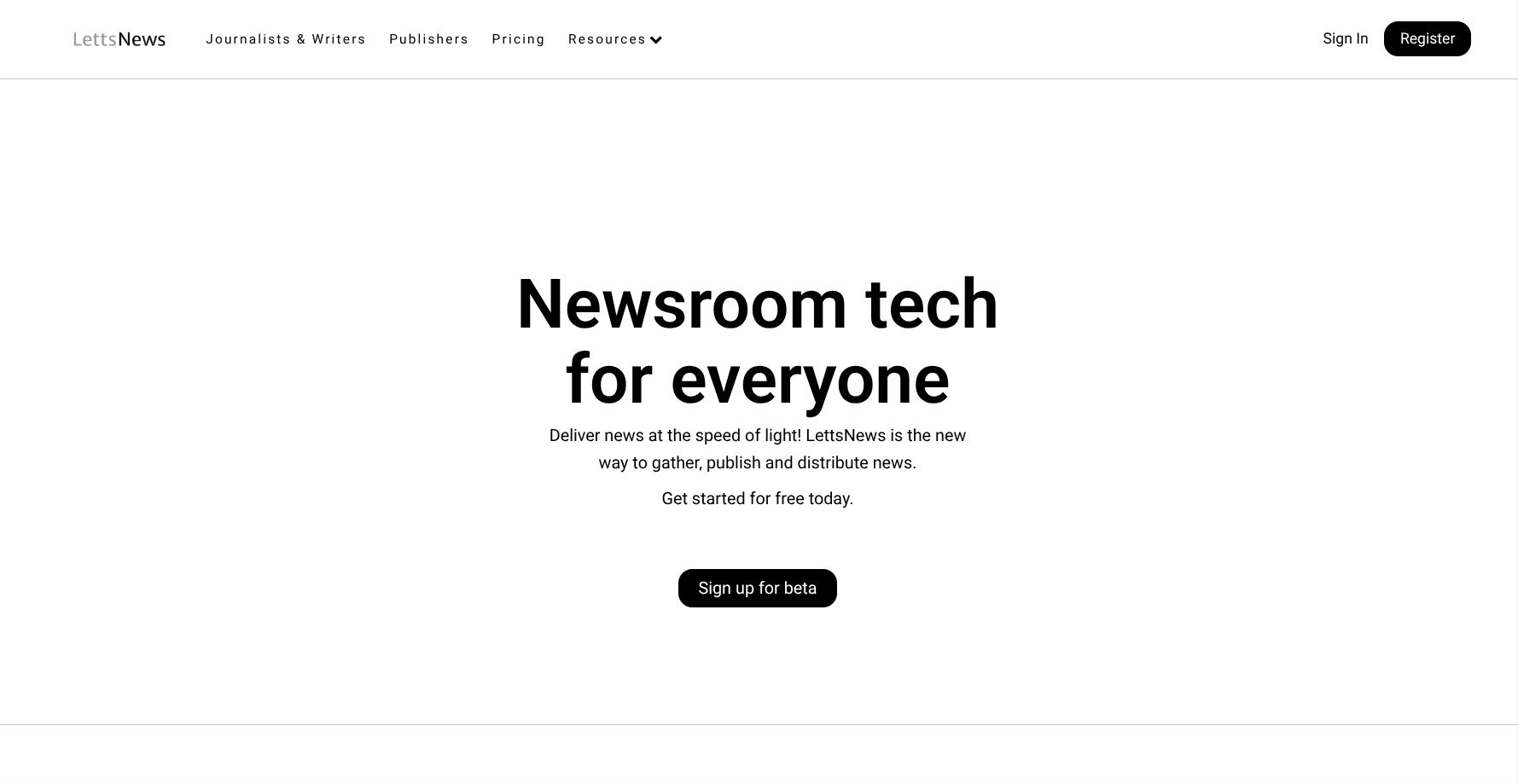
LettsNews
Since launching in beta last month, LettsNews has evolved nicely based on user feedback. The team added and extended 'hints' and a guide system to help newcomers navigate features, while also developing an exciting new 'Promotion' tool that will let users share auto-distributed stories directly to their social media channels. This 'newsroom tech for everyone' is seeing good early adoption from both small businesses and independent journalists. Also, its mobile apps have been updated for faster speeds with better sync performance, quicker loading times, and a new "Offline Mode" for journalists on remote field work. The tech team is targeting finalising the "Promotion" feature and preparing its mobile apps for full release in the Apple and Google Play stores at the end of Q1.
LettsArt
LettsArt had an impressive acceleration in users and online galleries started with most of its key numbers doubling in the last 2 weeks. As we head towards 1,000 online art galleries powered by LettsArt, the team can start to look toward the future - developing LettsArt 2.5, and targeting advanced users including professional studios, independent gallerists and leading curators. This no-code AI platform helping sell art online better operates highly efficiently, to date comfortably supporting its rapid growth in artists, art collectors and gallery users without significant effort on support or patches. In February LettsArt also updated back end LLM's for more advanced AI reasoning to auto-generate curator quality artwork descriptions and art posts.
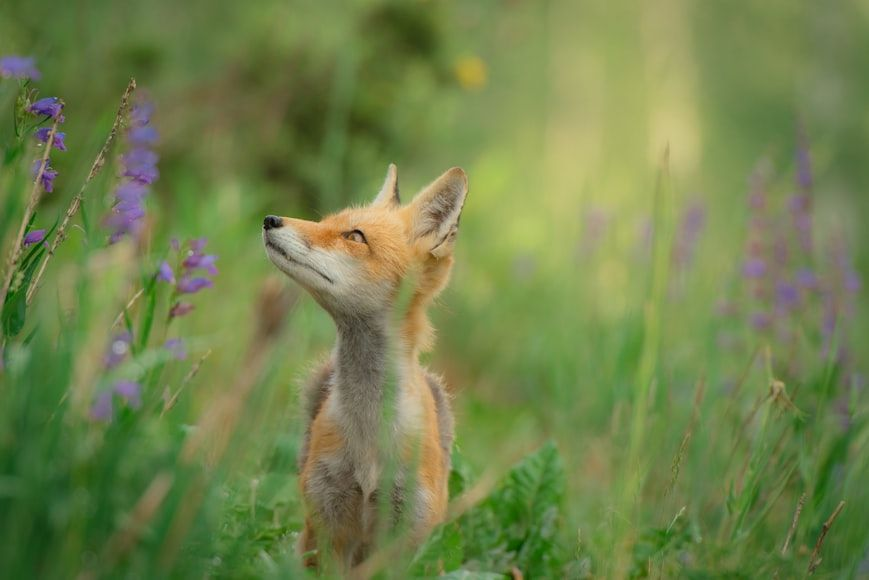
LettsSafari
LettsSafari subscribers continued to grow as its influencer-heavy early adopters began to spread the word more widely, while the team also launched a broad Instagram campaign. Some of the latest updates from its rewilding safari parks included 'A day in the life of a LettsSafari fox' and 'A winter wildlife's photo shoot' thanks to the work of the amazing wildlife photographers at LettsSafari. LettsSafari's team will be hosting a day for influencers and rewilding and wildlife experts in Exeter on Saturday June 14. Subscribe today to get your private, VIP invitation.
Other LettsGroup Ventures
We highlight just a few of our ventures in each monthly edition of The LettsGroup NewsFlash. To explore other LettsGroup ventures go to LettsGroup/ventures.
While venture capital firms are actively investing in artificial intelligence as a transformative technology, evidence suggests that AI may fundamentally disrupt the traditional venture capital model itself.

In an AI-enabled environment, human capital is poised to become more valuable than financial capital. This represents a significant departure from conventional venture funding frameworks. Artificial intelligence technologies are empowering entrepreneurs to transform concepts into products using large language models (LLMs) and other AI tools, rather than relying solely on traditional resource-intensive approaches that demand substantial capital investments.
The implications for venture development are profound: entrepreneurs can now progress from ideation to product development and market scaling with significantly reduced time frames and capital requirements. What previously demanded years of development and millions in funding may now be accomplished in months at a fraction of the cost - effectively creating a form of "venture building deflation."
Many established venture capitalists currently view AI primarily as an efficiency tool - automating business plan screening, expediting due diligence processes, enhancing market research capabilities, and accelerating document creation. While these perspectives are valid in the near term, they fail to recognise the more transformative potential that AI presents for the venture ecosystem.
Artificial intelligence can substantially reduce human capital requirements across virtually every aspect of venture development that entrepreneurs previously depended upon. With AI support, a small founding team of two or three capable entrepreneurs could effectively operate a technology company generating multi-million dollar revenue. This is possible because:
The appropriate venture building methodology, when combined with purpose-specific AI tools at each development stage, will construct the venture with minimal human intervention. In this environment, the conceptual innovation becomes the primary asset.
Once products and services are developed, AI can:
The core operational expenses will shift toward software subscriptions, hardware, computational resources, and compensation for experienced business leaders who oversee the AI-driven product development. Consequently, AI-powered ventures may achieve profitability substantially faster than traditional counterparts.
AI systems will also be capable of identifying optimal board members and advisory resources. The new generation of entrepreneurs will have access to strategic and market expertise without traditional venture capital intermediaries that often impose preference shares and dilutive terms.
Perhaps most significantly, AI and AI assistants will connect entrepreneurs directly with funding sources, potentially bypassing traditional venture capital firms entirely.
This phenomenon parallels how younger generations have moved from public social media platforms to private, encrypted communications channels. Similarly, AI will enable business founders to connect directly with individual investors and specialised, entrepreneur-friendly funds that provide targeted value at critical junctures in the venture development process.
Each business function traditionally required by entrepreneurs will be constructed and managed by AI systems - spanning finance, legal, human resources, recruitment, product development, operations, marketing, sales, and customer support. Forward-thinking entrepreneurs will have the capability to build businesses generating tens of millions in revenue, serving thousands of customers, primarily through AI implementation with only a small team of highly capable entrepreneurs managing the overall strategy, product design, and essential customer relationships.
What entrepreneurs will require is access to superior venture development methodologies and the expertise to select appropriate AI tools and create effective AI prompts. In the near future, AI prompt engineering may become a central competency for venture development.
This transformation is not theoretical - it is already underway. Innovative ventures are being developed using these approaches, and pioneering investment firms are creating AI-powered venture development platforms to support and build next-generation companies through networks of entrepreneurs leveraging their AI infrastructure.
The fundamental shift occurring is that venture firms will prioritise human capital over financial capital.
The venture capital organisation of tomorrow will need to possess the most advanced AI venture development platform operating sophisticated company-building processes, and will connect this infrastructure with exceptional entrepreneurs to manage each venture generated from the system. Effectively, the venture capital firm itself will function as an AI system with an associated network of entrepreneurs.
One example of this new venture model is Steel Perlot, backed and led by former Google Chairman Eric Schmidt. This relatively new firm aims to identify, invest in, and develop multi-generational platforms capable of attracting billions of users and transforming entire economic sectors.
Their stated objective is to catalyse systemic change in domains where exceptional talent and technology can produce breakthroughs with widespread adoption. They employ a hybrid approach - sometimes investing, often building directly—but only supporting initiatives they believe will achieve global scale. While still in early stages, this organisation represents an emerging paradigm.
LettsGroup, a European entity (and parent company of The LettsJournal), represents another example of this evolution. This organisation positions itself as a new category of venture capital group that builds and backs capital-efficient ventures through their AI VentureFactory, which they believe delivers superior returns through systematically improved venture success rates.
The company has progressed further along this trajectory with several successful ventures launched through their methodology. Rather than expecting all portfolio companies to reach billion-dollar valuations, they focus on developing profitable, sustainable enterprises. Their investment thesis concentrates on platform businesses in Web3, artificial intelligence, and climate technologies. Their growth strategy emphasises technological leverage rather than human resource expansion.
This UK-based organisation maintains a substantial and expanding network of experienced venture leaders who each contribute to multiple ventures, presumably to maintain engagement and enable the firm to capitalise on group dynamics and ecosystem-driven portfolio synergies. In essence, they support experienced entrepreneurs with tools, technologies, and systems designed to accelerate and enhance outcomes, with capital access integrated into their methodology.
If pioneering AI-enabled venture capital firms like Steel Perlot and LettsGroup represent the future direction, tomorrow's entrepreneurs may integrate with venture factory platforms rather than traditional legal structures that offer limited value beyond capital while often transferring ownership to the venture firms intended to support them.
The AI-enabled future should ultimately empower entrepreneurs more effectively than simply enriching venture capitalists, creating more direct connections between entrepreneurs and the institutional investors that have traditionally funded venture capital organisations. This represents a fundamental restructuring of power dynamics in the entrepreneurial ecosystem—a transformation that shifts greater control and value creation potential to innovative founders.
This article was developed from insights first published on LettsJournal.
Picture your favourite action hero: resourceful, scrappy, always tinkering with gadgets in the nick of time. That’s the quintessential entrepreneur in “Founder Mode”. Now, swap in the polished office exec, presenting slides with perfect bullet points - enter the corporate boss in “Manager Mode”. Both are crucial in their own settings, but mixing them up in a high-growth startup can be like asking your house cat to catch a Frisbee.

According to Paul Graham of Y Combinator, Founder Mode calls for an intense, almost obsessive focus on building and iterating. Founders need to operate in a perpetual state of urgency, wearing multiple hats (or even all the hats if they have to). They thrive on incomplete information, tight deadlines, and big leaps of faith - like jumping out of a plane and assembling the parachute on the way down. Brian Chesky at Airbnb has famously emphasised laser-like devotion to product experience and user satisfaction, which propelled Airbnb from a wacky airbed idea to a global phenomenon.
By contrast, Manager Mode demands a systematic approach that relies on structure, process, and delegation. This style works wonders in a more established environment: think big corporations with hierarchies, detailed processes, and an HR policy for everything including “who ate my yogurt in the fridge”. Managers excel at ensuring stability and efficiency, implementing metrics, and optimising for incremental improvements - crucial traits once a company matures past its hectic toddler years.
However, in a high-growth startup, overemphasis on Manager Mode can be dangerous. In early to mid-stage ventures, speed trumps structure. If managers are too focused on tight protocols, they risk slowing down innovation, frustrating agile teams, and ultimately losing ground to nimbler competitors. Let’s not forget the wise words from LettsGroup : in a scale-up context, you need a founder’s grit and creative chaos to maintain momentum. Corporate managers can inadvertently crush that spirit by demanding evidence and processes for every tiny move - at a time when rapid experimentation and pivoting on the fly are the startup’s lifeblood.
Let's face it: putting a traditional corporate manager in charge of a high-growth startup is like asking a librarian to DJ at a rave. Both are professionals, but one of them is about to have a very, very bad time. The fundamental divide between "Founder Mode" and "Manager Mode" isn't just about different approaches to business - it's about different species of leaders altogether.

Imagine being someone crazy enough to bet their future on an idea that most people think is stupid, while simultaneously being sane enough to actually execute it. That's your founder in their natural habitat. And these beautiful weirdos share some distinct traits:
Delicious Delusion: They possess a level of conviction that would make a cult leader blush. We're talking about people who see empty apartments and imagine Airbnb, or look at a bookstore and envision Amazon. As Brian Chesky demonstrated, sometimes you need to be just delusional enough to imagine a world where sleeping in strangers' homes becomes normal.
Learning at Warp Speed: LettsGroup's research shows that founders are essentially human sponges on steroids. While corporate managers are perfecting their PowerPoint skills, founders are learning everything from coding to cap tables to customer psychology - usually all before breakfast.
Resource Wizardry: These folks could sell sand in the Sahara. They don't just manage resources; they conjure them out of thin air through sheer force of will and the occasional blood sacrifice to the venture capital gods.
Uncertainty Addiction: Where others see terrifying ambiguity, founders see a playground. They're comfortable making massive decisions with about 1% of the information any sane person would want, and somehow, they sleep just fine at night.

On the other side of the business universe, we have our corporate managers. Bless their process-loving hearts, they also have a number of common traits:
Resource Hoarding: These folks have their grip on a budget like it's the last crumb on Earth. They excel at optimising what exists, which is great until you need them to create something from nothing.
Risk Allergies: If uncertainty were peanuts, these would be the folks carrying an EpiPen. They've been trained to spot and eliminate risk like it's a game of corporate whack-a-mole.
Process Worship: They've never met a workflow they couldn't flowchart or a meeting they couldn't schedule another meeting about. Their natural habitat is a room full of Gantt charts and KPI dashboards.
Hierarchy Heroes: They navigate corporate politics with the skill of a Renaissance diplomat, though they might break out in hives if asked to operate without a clear reporting structure.
That’s not to say Manager Mode doesn’t have its place; it absolutely does - once a scale-up hits a more stable, mature phase. After all, no founder wants to be the reason the company has zero processes and the accounting books look like a teenager’s messy bedroom. But until then, strong entrepreneurial leaders should remain in Founder Mode, keeping the original spark alive. Their traits - fierce passion, relentless drive, and a willingness to fail fast - are the key to continuing that rocket ride.
With the growing debate about Founder Mode versus Manager Mode, LettsGroup, who use their AI VentureFactory to help founders scale systemically, has researched the key traits required of an entrepreneur to stand a chance of being successful at Founder Mode. They have also looked at the traits required to be a successful corporate manager and how these two seemingly 'opposing' skill sets can interconnect - or not...

Innovation Suffocation: Nothing kills the startup spirit quite like a manager insisting on a 12-step approval process for testing new ideas. While founders are playing jazz, managers are trying to write a symphony for an orchestra that doesn't exist yet. Plus, corporate managers are taught to be risk averse and cautious, not quite the vibe of your average startup team.
Premature Process-ification: Corporate managers love building infrastructure like teenagers love TikTok, or did... They'll create departments, hierarchies, and processes for a company of five people, essentially building a corporate cage before the startup butterfly has even emerged from its chrysalis.
Cultural Catastrophe: Watch in horror as the "move fast and break things" ethos transforms into "move cautiously and file a report about it". The high-ownership startup culture crashes headfirst into permission-based paralysis.
Timing Tragedy: By the time a corporate manager has finished their risk assessment spreadsheet, three competitors have launched, iterated, and pivoted twice. As Chesky would tell you, Airbnb would still be selling election-themed cereal if they'd waited for perfect market analysis.
The brutal truth? Neither mode is inherently superior - they're just catastrophically wrong when misapplied. Manager Mode is like a fine wine: perfect for mature companies but wasted on a startup that needs the entrepreneurial equivalent of Red Bull. Meanwhile, Founder Mode in a large corporation can be like letting a bull loose in a china shop - exciting briefly, but ultimately expensive. Beware DOGE...
In the early stages, your startup needs a chaos pilot, not a process prophet. Save the corporate managers for when you're big enough to need someone to optimise your ping-pong ball budget and design your company cafeteria's tasting menu. So, next time you’re considering who to put in charge of your early-stage or rapidly scaling startup, ask: do you need an inventor or a caretaker? Either way, remember you can’t cat-proof a Frisbee, and you can’t always plan a revolution with a spreadsheet. Sometimes you’ve just got to build, iterate, and hang on for dear life.
This article first appeared at The Letts Journal.
LettsGroup HQ
LettsGroup had a busy January extending the AI VentureFactory with added features, onboarding processes and pricing plans for new users, while also migrating its venture building process, Innov@te, to a more advanced platform, including a wiki-type system with AI. The team continue to extend the installed AI apps and infrastructure, while adding more connectors across core business processes - getting to a level of automation that can fundamentally alter venture-building economics. The power of the AI VentureFactory will be further tested this year as LettsGroup's more developed 'branded ventures' begin recruiting dedicated, specialist leaders to take them beyond startup, through scale-up, with the AI VentureFactory acting as the bridge from the first-start team to the scale-up team.
LettsNews
LettsNews launched in beta last week offering 'newsroom tech for everyone' . It had a strong first week with a number of businesses signing up. Alongside its fully featured web app, which is now available to everyone, LettsNews is adding mobile apps for Android and Apple devices in the coming weeks. The mediatech Cloud software company offers 4 paid single user subscription plans, and will be adding a Company plan. The platform adopts a viral growth model as users invite co-workers, freelancers and agencies to their LettsNews Teams to share news items and stories, gathering inputs, copy edits and sign-off's for stories prior to release with LettsNews' auto-distribution tech. Any journalist, writer, content manager or PR can now sign up to LettsNews' web app at LettsNews.com.
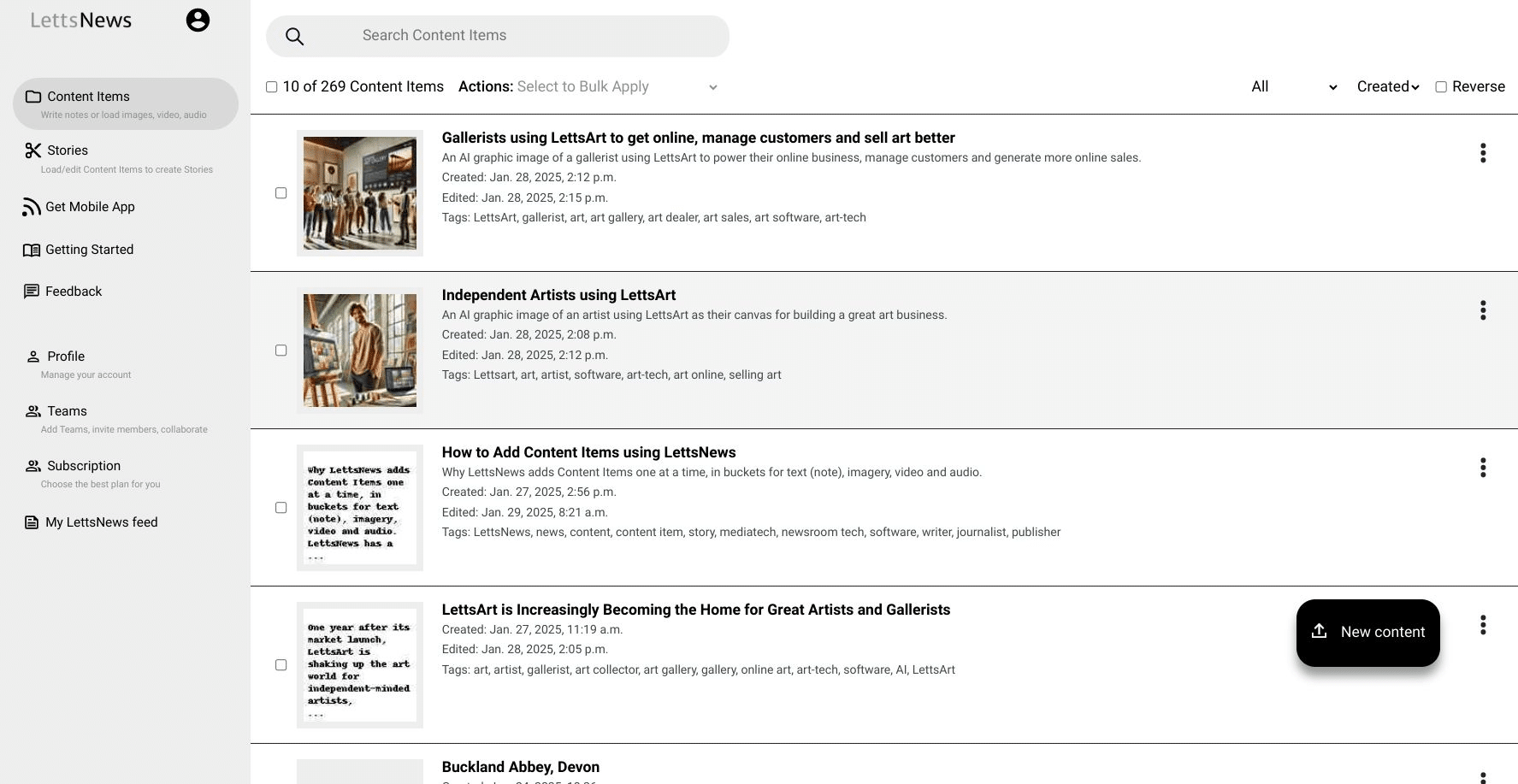
LettsCore
LettsCore, the web3 distributed media platform, started building its full commercial website ready for market launch later in Q1. The team also completed the platform's subscription plans and billing mechanisms with a pricing model that reflects the underlying economics of web3 - similar to other leading blockchain platforms. They have also implemented individual subscription wallets for every subscriber so their accounts can be auto topped-up following subscription payment and one-off credit purchases. The platform offers flexible pricing with 3 tiers for individuals, plus a company plan with secure, managed top-up for higher levels of activity / content and larger teams. This work continues through February delivering integrated subscription / top-up directly in the SaaS portal. Further to this the team implemented NFT minting and auto-distribution to Magic Eden's NFT Marketplace - a leading marketplace for Solana NFT content.
Want to escape the city? Book your 2025 company retreat or family break today at LettsRetreat.com.
LettsArt
LettsArt now has over 800 artist and art galleries using its subscription based, no-code AI software platform. A year after its market launch LettsArt is increasingly establishing itself as the all-in-one platform for artists and gallerists. In conventional art marketplaces, artists often struggle to stand out and connect directly with potential buyers. LettsArt turns this model on its head by providing each artist or gallerist with their own independent online gallery. From managing and distributing art to coordinating sales and managing collectors, LettsArt consolidates all of these once-siloed tasks into a single, streamlined dashboard. It's early validation with emerging artists will be extended in 2025 to higher value customers including professional studios, commercial galleries and art dealers.

EA Global AI
EA Global AI, which pioneers 'autofill' technology for company reporting, had their busiest month yet in January, with 2 enterprise customers, Hogan Lovells and Novartis, and 5 SMEs entering trials. Another 7 companies will kick off trials in February. On top of this, EA was featured in Asia Media’s ESG Investor publication. The senior team uses LettsGroup's AI VentureFactory to automate and accelerate processes, currently focused on organic and content marketing (with LettsNews in the stack) while also streamlining its SME onboarding, aiming to complete this in Q1, to increase capacity and confidently acquire smaller customers at scale and with lower friction.
LettsSafari
LettsSafari enjoyed a large jump in subscribers over the Christmas period and into January. This pioneering rewilding and nature restoration platform now boasts many known wildlife and conservation experts and influencers as subscribers, which should serve it well as it starts to extend its reach and capabilities. It has exciting plans for 2025. For any land owner or wildlife enthusiast that dreams of building their own mini rewilding safari park - here's how!
Other LettsGroup Ventures
We highlight just a few of our ventures in each monthly edition of The LettsGroup NewsFlash. To explore other LettsGroup ventures go to LettsGroup/ventures.